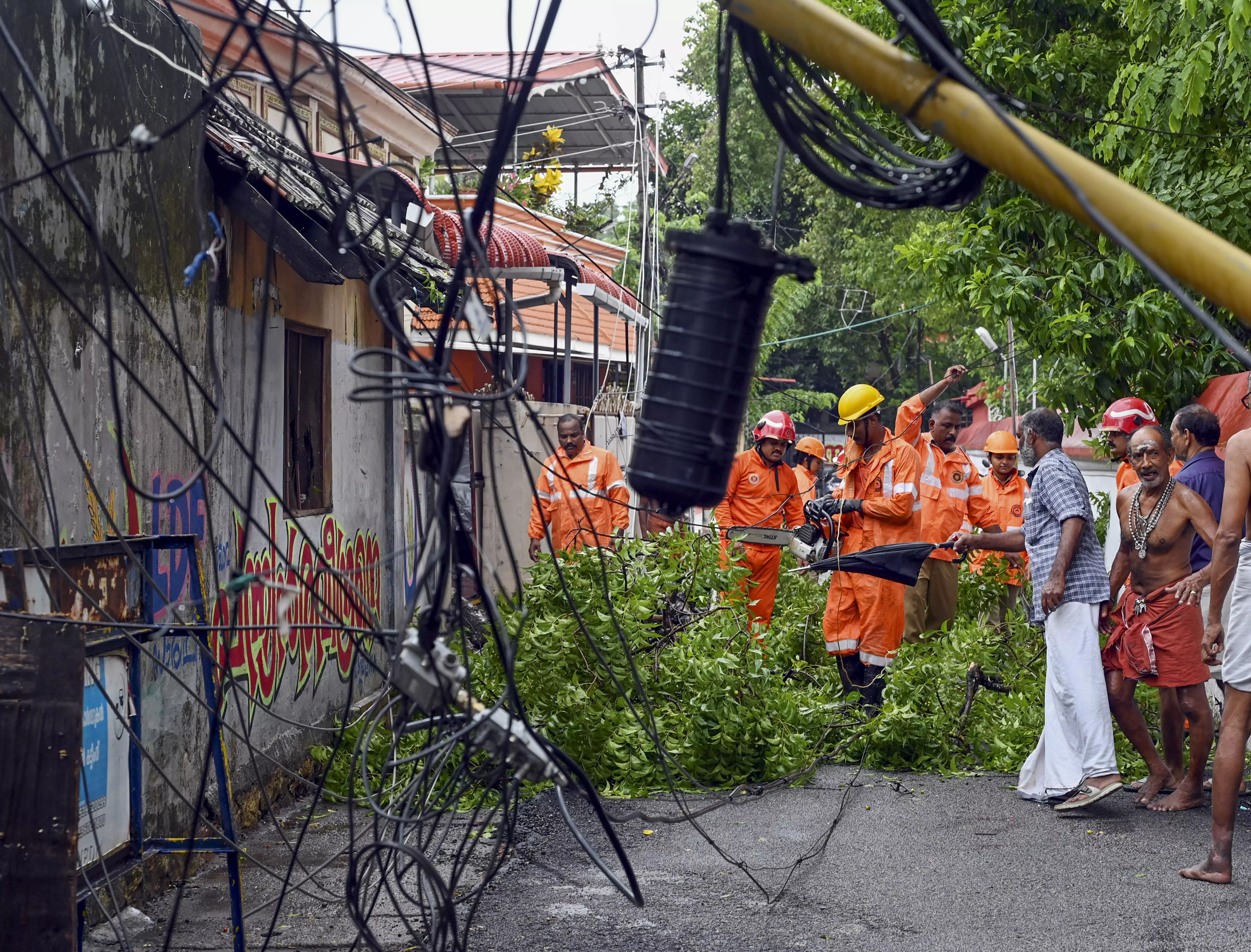
After heat wave, Kerala now battles torrential rain, flash floods
After Cyclone Ockhi in 2017 and a deluge in 2018, people in Kerala increasingly worry about climate change; even one hour of rain sparks panic across the state

By the end of April, Kerala was intensely debating the potential for power curbs as the Kerala State Electricity Board issued frequent advisories urging customers to cut down on electricity use during peak hours. At least three deaths were blamed on heat wave, prompting health and disaster management-related warnings.
The Kerala State Disaster Management Authority and the India Meteorological Department (IMD) had issued orange and even red alerts for heat wave in the final week of April. As the summer rain played hide and seek in most parts, especially in northern Kerala, where the rain deficit was over 90 per cent, temperatures rose in most areas of the state by 2-3 degrees Celsius above normal.
According to the IMD, the monsoon was expected to arrive after May 31. However, pre-monsoon showers were predicted as early as mid-April but were delayed, arriving immediately after the first week of May.
Rains and floods
However, in less than a fortnight, the situation changed dramatically. After pre-monsoon rains, Kerala is now facing the threat of flash floods across urban centres. More than five districts have been issued various levels of alerts due to heavy and incessant rains and the potential for flooding.
Fishermen have been warned against venturing into the sea, with high waves and sea incursions expected along the coast. A state control room has opened in the health department directorate to strengthen epidemic-prevention activities and to coordinate health-related efforts.
“Actually, the weather pattern is normal, but there was a shortage of time between pre-monsoon and monsoon seasons. This may be due to the El Niño and La Niña transition in the Pacific,” said Mohankumar, a weather observer and a former science professor based in Thiruvananthapuram.
Pre-monsoon blues
“Generally, pre-monsoon showers start at the end of March and continue until May. This helps cool both the sea and land, preventing heat waves. However, this year, there was little pre-monsoon rainfall during March and April, leading to hotter summer temperatures. Moreover, there were no low-pressure systems in the Arabian Sea or the Bay of Bengal during April and the first half of May,” Mohankumar added.
He went on: “The cyclonic circulation currently formed is a usual occurrence. Annually, just before the monsoon season, a vortex develops in the Arabian Sea, facilitating the entry of monsoon winds into Kerala. This phenomenon is known as the Monsoon Onset Vortex, typically forming over the Lakshadweep area.
Government acts
“However, this time it is closer to the shore, possibly due to low pressure in the Bay of Bengal. Both the Arabian Sea and the Bay of Bengal are linked by an East-West trough, with the low-pressure system pulling the vortex closer to the shore,” Mohankumar explained.
In the wake of the continuous rain and repeated flash floods in the Kerala capital, Minister for General Education and Labour V Sivankutty, who represents the Nemom constituency in Thiruvananthapuram, held a high-level meeting with various departments.
Urban mess
Torrential rain has flooded residential areas and major roads over the past two days. Following the meeting, the minister set a new deadline for the ongoing works in the capital, stating that all roads being built as part of the Smart City project would be completed by June 15. He also promised to address the flooding issue within the next two days.
Heavy rainfall over the past three days has caused severe waterlogging in several areas of the city. With more heavy rains forecast in the coming days, the minister has directed officials to assess vulnerable areas and take steps to address the flooding.
Why flash floods?
According to Mohankumar, flash floods are a result of urbanization. “There are no flash floods in rural areas. The lack of space and proper drainage systems cause waterlogging on roads. The drainage capacity is less than the volume of water, so it takes many hours for the water to drain after the rain stops. This is a common occurrence in Thiruvananthapuram as well.”
Once the rains stop, the water starts to drain out.
“Short, heavy rain is now a common phenomenon caused by convection. Heat on land causes warm air to rise; as it reaches a certain height, it cools and clouds develop. The water vapour in these clouds forms heavy drops, resulting in a downpour of a large quantity of water. This rain lasts only a few minutes but the amount of water can be equivalent to many hours of normal rain, creating flash floods. The extreme hot climate is the underlying reason,” he told The Federal.
Fishermen struggle
The changing weather conditions are taking a huge toll on the fishing communities, who were already struggling after last month’s Kallakkadal (swell surge waves) phenomenon. High sea waves flooded hundreds of houses in several coastal areas, forcing people to relocate to relief camps. The most affected included Alappuzha, Kollam, and Thiruvananthapuram districts.
“We have been suffering way too early this year, even before the monsoon period. We cannot go to the sea for fishing now due to the wind and rough sea warnings caused by the rains. From June, there will be a trawling ban as well. We are going to face a tough period this time, and we do not know how to tackle the situation,” said Robert D’Cruz of Vizhinjam, a fish worker on a boat.
After the Ockhi cyclone disaster in 2017 and the deluge in 2018, people across Kerala are increasingly worried about climate change. Even an hour of rain now causes panic and raises alarms for the government.
